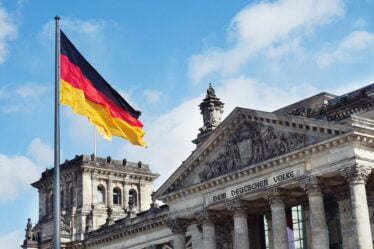
September 1683, many meaning nothing …. but in that month or between 11 and 12 September a battle took place to say the least epic between the Polish-Austro-German army commanded by the Polish King Giovanni III Sobieski against the ‘Army of the Ottoman Empire commanded by the Grand Visir Merzifonlu Kara Mustafa Pasha. It may seem what nothing of nothing, but in reality thanks to this battle the inexorable push of the Ottoman expansion in Europe stops. But what does all this have to do with the city of Florence? The army or rather the various forces that made up the Christian “grouping” were: 30,000 Poles under the command of John III Sobieski with about 5,000 winged users, the elite of the Polish army, 19,000 Francons, Swabians and Bavarians, in command of Giorgio Federico di Waldeck, 9,000 Sassoni, under the command of Giovanni Giorgio III of Saxony, 18,500 Austrians, Tuscans, Venetians and Mantuan, under the command of Carlo V Duke of Lorena and Eugenio di Savoia.
In memory of the Florentine soldiers who fell into the famous battle were commemorated in the church of S. Annunziata with a slightly particular ceremony, namely the “catafalco”, the meaning of the name and somewhat uncertain, the experts propose that derives from the Latin “captiva” (capturing the gaze) and from “stage” (high and visible place). In essence, the catafalco was a wooden construction formed by a pyramid trunk base usually covered with damned black fabric with embroidered in relief of “skulls with crossed tibies” and “hourglasses” which had to remind the Christian assembly “the inexorable spend time “and the” dissolution of the body after death “. This base then, usually, was surmounted by a coffin (logically without body) on whose lid a golden (always wooden) sphere was further grafted on whose top a wooden sculpture in the shape of a “dove with open wings”. Everything could measure on average on on average 5 or 6 meters and in width 3 or 4 meters, what had to hit the faithful was the “verticality” that had to give the sense of ascent to the sky of the deceased. This time the catafalco of S.Annunziata had been made in the form of a fort (military structure), in painted wood so as to seem of stone, all around were placed skeletons with armor, helmets and swords, or dressed with “junuator” of Leather and Alabarde (male garment in use in the six-eight hundred, consisting of a rather tight jacket up to the knee, often embroidered.
To celebrate this epic victory, our Grand Duke Cosimo III commissioned Bartolomeo Stefanini an organ for Badia Fiesolana. The supports that held the balcony of the Cantoria had Foggia of Saracens, the defeated enemies. This valuable organ was then dismantled by Napoleonic troops to be brought to France but the difficult transport was immediately interrupted near Faltona (Borgo San Lorenzo) and the organ was reassembled in the local parish church. In recent years, a restoration has proceeded and the organ will see, when it will be possible, a definitive relocation in the largest church of the SS. Crucifix in Borgo San Lorenzo.



